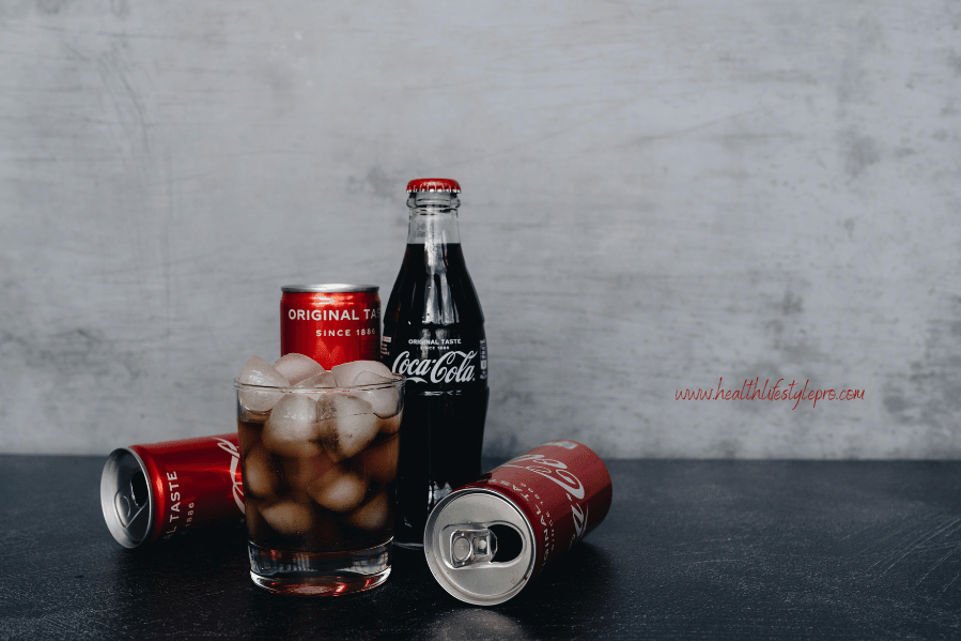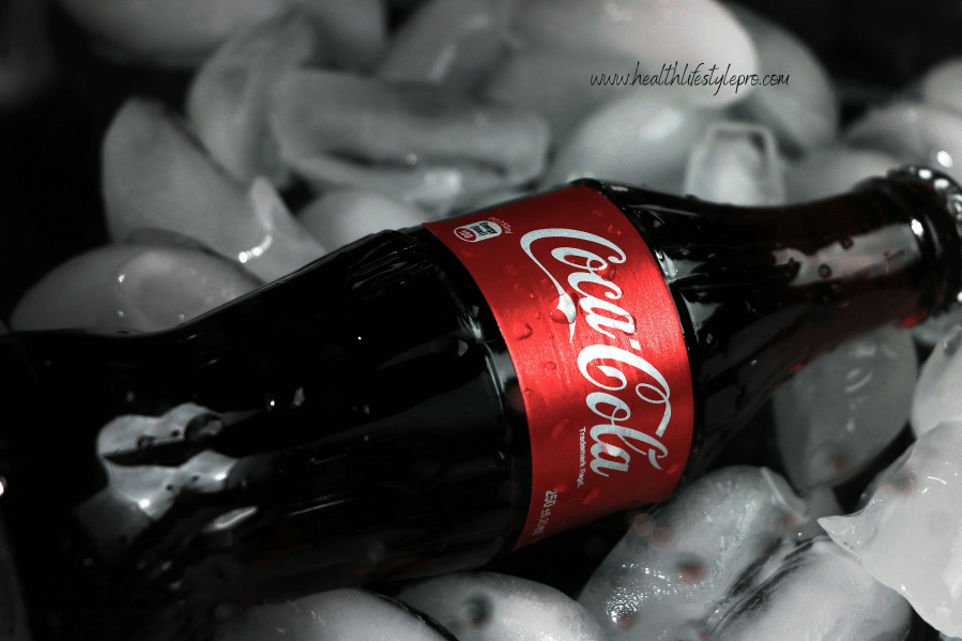depending on what you’re drinking, If you want to avoid caffeine, try one of our other caffeine-free sparkling soft drinks, such as Fanta or Sprite.
Did you know? A mug of tea contains about 75mg of caffeine, while a mug of coffee has about 100mg of caffeine.
How does the caffeine in our cans compare to other drinks? See caffeine chart.
The amount of caffeine in a 330ml can
| Coca‑Cola Classic | Coca‑Cola Zero Sugar | Coca‑Cola Light |
| 32mg | 32mg | 42mg |
Describe caffeine What Is It?
A naturally occurring substance, caffeine stimulates the central nervous system to increase alertness and ward off drowsiness.
In particular, it is common in cocoa beans, tea leaves, and coffee beans. It is present in the leaves, seeds, and fruits of many different plants.
A lot of goods, such as energy drinks, soft drinks, and some over-the-counter drugs, sometimes include it as an ingredient.
Caffeine is currently the most widely consumed substance worldwide
An estimated 85% of Americans drink at least one caffeinated beverage every day, consuming 165 mg of caffeine on average. Although most people who consume caffeine do so through coffee, a significant amount of the intake for individuals under the age of 18 comes from carbonated soft beverages like Coke.
For what reason does caffeine exist in soft drinks?
You stay up and energized because caffeine stimulates the central nervous system.
Cola drink manufacturers (like Coca-Cola) used to create their beverages with kola nut extract, which naturally contains caffeine. This meant that caffeine was a naturally occurring ingredient in cola drinks.
Afterward, Coca-Cola added extracts from the coca plant to their beverages. Because none of these natural sources is used anymore, it is only natural that fizzy sodas would include caffeine to replace the kola nut flavor. This is the justification given by soft drink companies.
In 1980, the FDA suggested removing caffeine from soft drinks. In response, manufacturers of soft drinks claimed that caffeine was added for flavoring purposes and was safe for consumption.
Caffeine is found in over 60 different plant species; the most well-known are cocoa beans, kola nuts, and tea leaves. Many popular soft drinks include caffeine, as do a range of pharmaceutical preparations and over-the-counter medications such as analgesics, diet aids, and cold and flu remedies.
Caffeine is in my Coke or other soft drinks
| Soft drinks | Serving size | Caffeine (mg) |
|---|---|---|
| Pepsi True | 10 oz. | 32 |
| Pepsi Zero Sugar | 12 oz. | 69 |
| Zevia Mountain Zevia | 12 oz. | 55 |
| Mountain Dew—diet or regular | 12 oz. | 54 |
| Diet Coke | 12 oz. | 46 |
| Zevia Cola | 12 oz. | 45 |
| Zevia Dr. Zevia | 12 oz. | 42 |
| Dr Pepper—diet or regular | 12 oz. | 41 |
| Zevia Cherry Cola | 12 oz. | 38 |
| Pepsi—diet or regular | 12 oz. | 35–38 |
| Coca-Cola—regular or zero sugar | 12 oz. | 34 |
| Barq’s Root Beer | 12 oz. | 22 |
| Sunkist—diet or regular | 12 oz. | 19 |
| 7-Up, Fresca, or Sprite | 12 oz. | 0 |
| A&W Root Beer—diet or regular | 12 oz. | 0 |
| Fanta Orange | 12 oz. | 0 |
| Ginger ale, most brands | 12 oz. | 0 |
| Mug Root Beer—diet or regular | 12 oz. | 0 |
| Stewart’s Orange ‘n Cream—diet or regular | 12 oz. | 0 |
| Stewart’s Root Beer—diet or regular | 12 oz. | 0 |
| Surge | 16 oz. | 68 |
What are the long-term consequences of caffeine?
Four cups a day or 400 mg of caffeine are generally not problematic for most people. Still, even small amounts of caffeine can trigger anxiety, restlessness, insomnia, and a racing heart if you are sensitive to the stimulant.
Nutritionists and health experts consider it excessive to consume more than 600 mg of caffeine per day or 4–7 cups of coffee. Long-term overindulgence in caffeine (more than four cups of coffee a day) might lead to the following symptoms:
- Uncertainty
- Having trouble falling asleep
- Cuts
- Bone Loss in Women After Menopause
- Headaches and irritability
- lightheadedness with ear-ringing
- Tremor in the muscles
- Fatigue and weakness
- accelerated breathing and heart rates
- diarrhea, vomiting, nausea, and poor appetite
- a rise in thirst
- repeated urination
- irregular heart rhythm or pace
- Low blood pressure along with dizziness
- seizure, confusion, or insanity.
What Amount of Caffeine Is Too Much

Caffeine may be used safely with little chance of negative effects as long as it is taken in moderation. the majority of adults are thought to be safe at doses up to 400 mg per day.
To minimize the chance of adverse effects, it’s advisable to keep your consumption to about 200 mg per day.
Just two 8-ounce (237-ml) cups of coffee or about five 8-ounce (237-ml) glasses of green tea make up this amount, for estimation purposes.
However, to consume this much, you would have to consume more than six 12-ounce (355-milliliter) cans of Coke or four 12-ounce (355-milliliter) cans of Diet Coke per day.
FAQs
1. Is there a lot of caffeine in Coke?
Coca-Cola contains about 34 mg of caffeine per 12-ounce can on average.
2. Which soda has the most caffeine?
Energy drinks, not traditional sodas, typically have the highest caffeine content, often exceeding 100 mg per serving.
3. Does caffeine in Coke keep you awake?
Yes, caffeine is a stimulant and can help increase alertness, potentially keeping you awake, though individual responses vary.
4. Which Coke has no caffeine?
The caffeine-free version of Coca-Cola, called “Caffeine-Free Coca-Cola,” provides a familiar taste without caffeine
Conclusion
In summary, the caffeine content of Coke and Diet Coke is 32 and 42 mg/12 ounces (335 ml), respectively. This is less than that of other caffeinated beverages such as energy drinks, tea, and coffee.
Just remember to limit your intake to support improved health, as they are generally high in sugar and other dangerous elements.
To get the most out of the possible health advantages, choose other natural sources of caffeine in moderation, like tea or coffee.

I’m a seasoned content creator with 6+ years of experience crafting engaging, SEO-optimized content that drives traffic and rankings. I excel in keyword research, link building, and guest posting, ensuring your brand reaches new heights.

